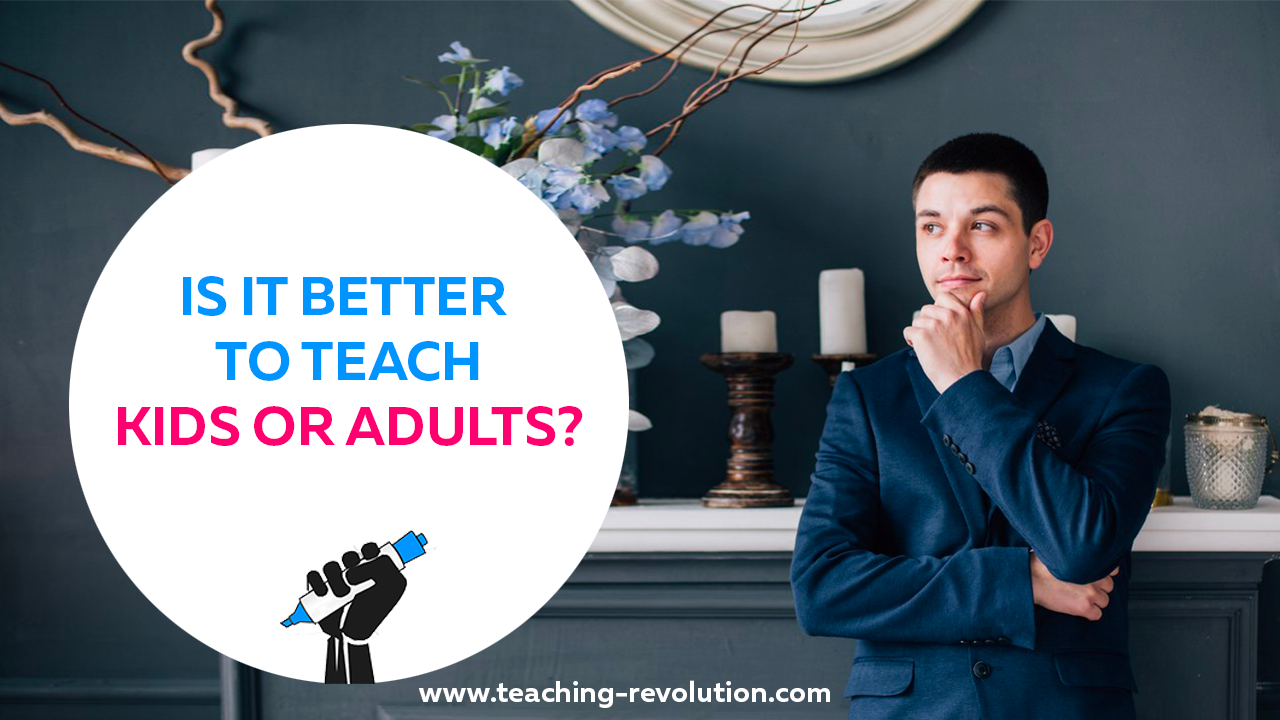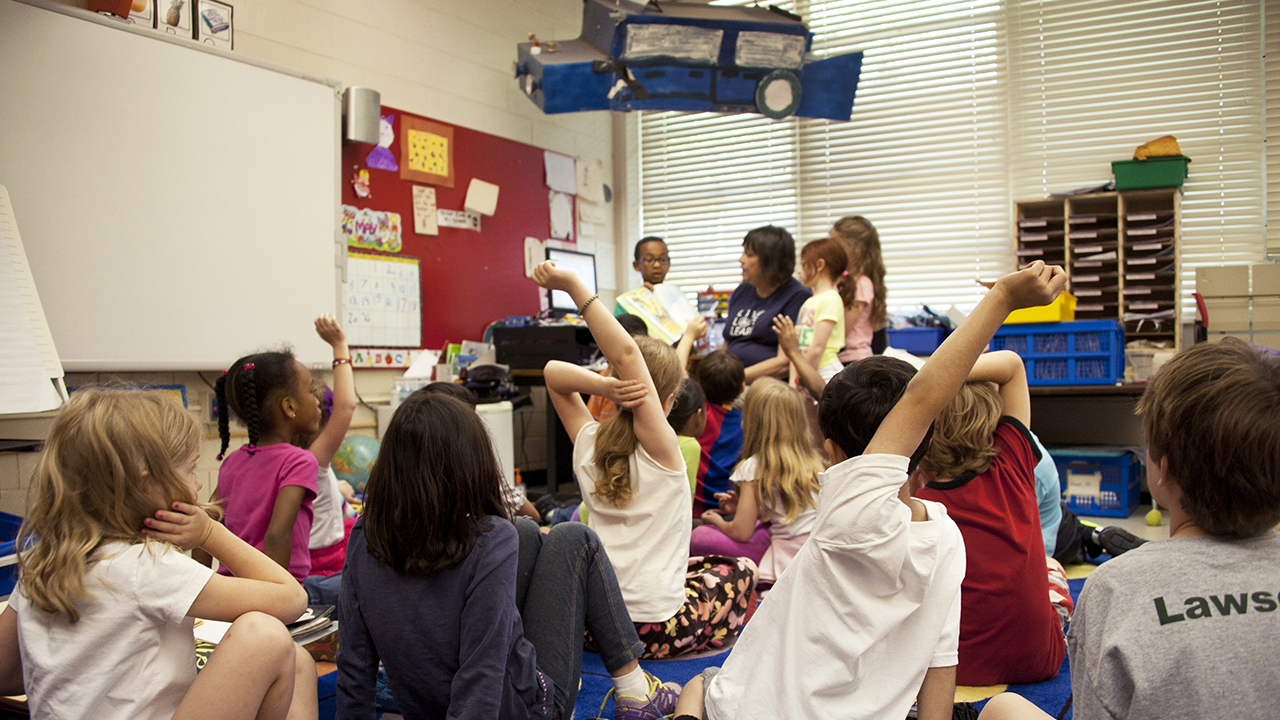Is It Better to Teach Kids or Adults?

Teaching is a demanding and dynamic profession. Based on their qualifications and personal teaching styles most teachers have a preference towards a particular age group of students (elementary, high school, or adult). However, as a language teacher, especially in the online space, being selective can limit your career growth. Therefore, you must be flexible and competent enough to adapt to market demands. While some teachers can easily adapt to teaching different age groups, others may struggle to make the transition.
Differences Between Teaching Adults and Young Learners
Adults and young learners have different learning styles and demand a distinct teaching approach.
Children are dependent on teachers for instructions. While they are curious and happily learn new things, they also have a very short attention span and get distracted easily. Teachers need to be hands-on and engaging to hold their interest. They should be able to improvise and blend instructional learning with games to ensure the learning environment is fun and spontaneous.
Adults have specific learning goals and have life experience to self-direct and self-evaluate the learning outcomes. When teaching adults, a teacher needs to go beyond just teaching; they need to highlight the relevance and the applicability of the knowledge they impart and show the students how they can use it to advance their personal and professional lives. Teachers also need to be able to facilitate adequate social interactions and provide mature learners opportunities to apply their prior knowledge.

Assumptions about teaching adults vs. assumptions about teaching kids
As educators you may have come across pedagogical and andragogical approaches to teaching. Traditional schooling is based on the methodology of pedagogy, assuming that children are like blank slates with little experience and need instructors to take full responsibility of what is taught and its effectiveness. Teachers monitor and evaluate students' progress, which is sequential, and keep the students motivated with external awards.
Andragogy, on the other hand, refers to self-directed learning and is focused on adult learning. The assumption here is that adult learners come with life experiences which they use as resources to self-direct their learning. They are driven by intrinsically motivating factors like self-esteem, better quality of life, etc. Instructors act as guides to help learners fill the knowledge gaps enabling them to find life / work solutions.
Then, there is a third approach called heutagogy, which refers to self-determined learning. Here the idea is that teachers should focus on developing students' autonomy, capacity, and capability of finding the answers to their questions on their own. This cultivates lifelong learning, which continues in parallel to, or even outside of, the classroom setting.
Experienced teachers blend these approaches to get the best out of their students, be they children, teenagers, or adults because the ultimate goal of any instruction is to achieve the best learning outcomes for the students.

How does the development of young learners and adult learners differ in the classroom (ESL example)
Adult learning is intentional and voluntary with specific goals, while on the other hand children are adult-dependent learners with different internal motivators. Adult learners are afraid of failure and embarrassment. They may hesitate to participate in class because of limited language skills. Children have less of these inhibitions and are generally more willing to experiment.
Adult students see teachers are facilitators, guides, or mentors, whereas children see them as authoritative figures who are in charge of the class.
However, there are some commonalities too. Both adult and young learners can sometimes feel disconnected and it's important to make lessons fun and interactive in order to encourage student participation. The main differences will be in the types of activities used and how they are implemented.
Adult students like to be involved in and have some control over their learning experiences, whereas children follow their teacher’s lead and let them control their learning.

What kind of teachers are better suited for teaching adults and what kind are better for children
If you are an energetic, patient, and creative person, try teaching children. If you enjoy working under pressure with high work expectations, then adult students would suit you. Both groups come with their own set of rewarding, as well as testing, experiences. Whether you choose to teach adults or teaching children is your preference, your readiness to explore teaching different age groups will keep you open to exploring a variety of possibilities.

Overview: pros and cons of teaching adults
Adult students bring rich and diverse knowledge and experience to class. They are mature and motivated, requiring little discipline and class management. Teachers can introduce more complex and engaging activities to encourage students to go beyond the practice and application of their newly acquired skills and also reflect, validate, and retain the information they've learned.
Teaching adults may seem easier than teaching children however there are some drawbacks:
- Adult learners have preconceived notions about learning styles, subject matter and their own abilities based on their beliefs, culture, and past experiences. This can affect teacher-student bonding and performance.
- Adult students come with experience and prior knowledge that can be quite critical. They challenge information that they deem to be irrelevant to their learning goals.

Overview: pros and cons of teaching kids
Some teachers find teaching young learners rewarding, while others find it stressful. Let’s look at some benefits and drawbacks of teaching young learners:
- Children tend to accept new information unreservedly. They do not have predetermined learning barriers and are open to learning new things.
- They are full of energy, but have short attention spans. Keeping them engaged for long periods can be challenging.
- Bored or tired children can act out, making it difficult for teachers to maintain discipline and manage the class effectively.
- There may be times when too much parental involvement can disrupt the class and hamper teaching and learning.
Whether you are a teacher who has always taught children and does not have much experience teaching adults or vice versa, your ability to embrace transitions will ensure you thrive and grow as a language teacher.

